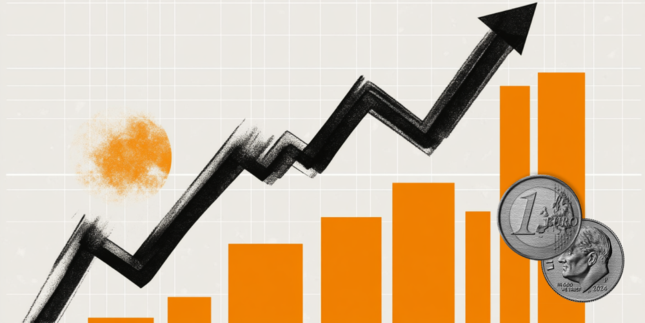Australian Dollar gains ground as markets digest China's response to the US
- AUD/USD advanced to 0.6255 on Tuesday, extending Monday’s rebound.
- China announced tariffs on specific US goods.
- Market sentiment improves on expectations of softer US data and potential RBA easing.
On Tuesday, the AUD/USD rose to 0.6255 as the pair extended Monday’s comeback. The recovery comes after renewed US tariffs on China prompted by President Trump followed delays in tariffs on Canada and Mexico, the latter of which have eased trade war fears.
Meanwhile, aggressive bets on a February Royal Bank of Australia (RBA) rate cut and concerns over China’s economic slowdown continue to weigh on the AUD.
Daily digest market movers: Aussie up as China imposes tariffs on US
- President Trump first announced a 25% duty on goods from Canada and Mexico but then agreed to postpone these tariffs for a month, easing immediate trade tensions. In tandem, a 10% tariff on Chinese imports remains in effect, while China has signaled it will contest these measures at the WTO.
- The US Dollar experienced volatility after a brief rally that pushed the Dollar Index toward three-week highs near 110.00 and then fell toward 108.00.
- On the data front, JOLTS Job Openings fell to 7.6 million in December, missing the 8 million consensus estimate.
- On the home front, Australian CPI data for December is anticipated to show subdued inflation, forecast at around 2.5% YoY compared to 2.8% previously, which has bolstered market bets on a 25 bps RBA rate cut in February.
- However, persistent concerns over China's weak recovery and sluggish domestic economic momentum continue to weigh on the Aussie.
- Broader market risk sentiment remains cautious following recent volatility in global equity and bond markets, while renewed geopolitical concerns and technology sector sell-offs have also added safe-haven demand for the US Dollar.
AUD/USD technical outlook: Bulls step on the gas, outlook improves
The AUD/USD pair edged up to 0.6255 on Tuesday as it navigated within a narrow trading range between 0.6200 and 0.6300. The Relative Strength Index (RSI) is at 53, positioned in positive territory and rising sharply, which signals growing buying interest.
Simultaneously, the Moving Average Convergence Divergence (MACD) histogram displays green bars, suggesting that while bullish momentum is emerging, it is still tempered by prevailing market uncertainties. With support firmly established near 0.6200 and resistance around 0.6300, a break either way will dictate the pace of the pair.
US-China Trade War FAQs
Generally speaking, a trade war is an economic conflict between two or more countries due to extreme protectionism on one end. It implies the creation of trade barriers, such as tariffs, which result in counter-barriers, escalating import costs, and hence the cost of living.
An economic conflict between the United States (US) and China began early in 2018, when President Donald Trump set trade barriers on China, claiming unfair commercial practices and intellectual property theft from the Asian giant. China took retaliatory action, imposing tariffs on multiple US goods, such as automobiles and soybeans. Tensions escalated until the two countries signed the US-China Phase One trade deal in January 2020. The agreement required structural reforms and other changes to China’s economic and trade regime and pretended to restore stability and trust between the two nations. However, the Coronavirus pandemic took the focus out of the conflict. Yet, it is worth mentioning that President Joe Biden, who took office after Trump, kept tariffs in place and even added some additional levies.
The return of Donald Trump to the White House as the 47th US President has sparked a fresh wave of tensions between the two countries. During the 2024 election campaign, Trump pledged to impose 60% tariffs on China once he returned to office, which he did on January 20, 2025. With Trump back, the US-China trade war is meant to resume where it was left, with tit-for-tat policies affecting the global economic landscape amid disruptions in global supply chains, resulting in a reduction in spending, particularly investment, and directly feeding into the Consumer Price Index inflation.
Forex News
Keep up with the financial markets, know what's happening and what is affecting the markets with our latest market updates. Analyze market movers, trends and build your trading strategies accordingly.




















